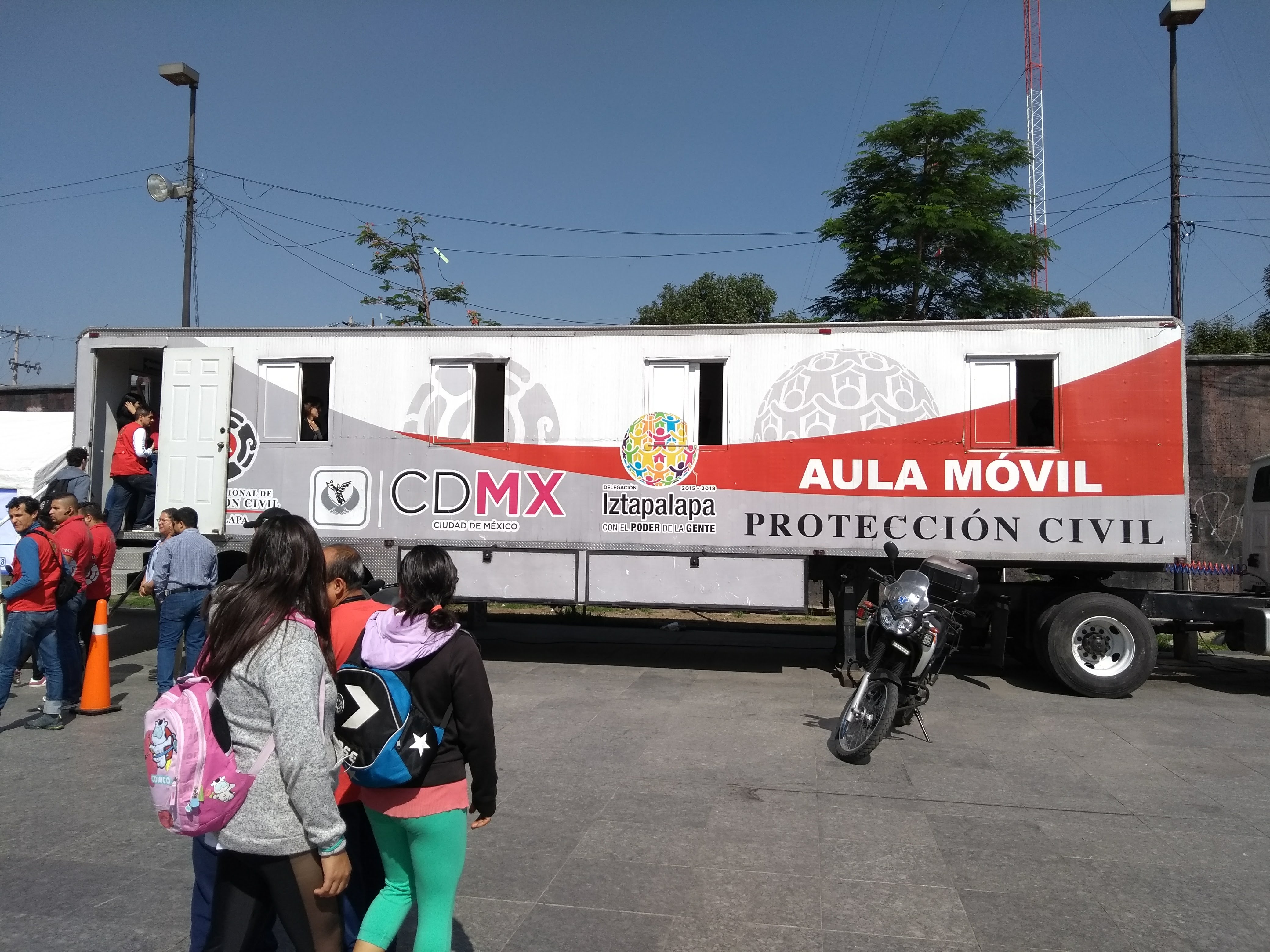
Iztapalapa was the focus for the Understanding Risk Forum Pressure Cooker, where interdisciplinary teams worked on scenarios developed by local experts to propose ways of communicating about the natural hazards, including earthquakes and flooding, to which the area is vulnerable.
In follow up to our post on the Understanding Risk Forum in Mexico, where Matthew Lickiss was part of the organising team for a Pressure Cooker workshop to develop new ways of communicating about risk of and response to natural hazards, we add this link to a write up by Lydia Cuminsky, of Water Youth Network, who led the workshop.
And after a fascinating tour of Iztapalapa, one of the settings for the hazard scenarios that workshop participants responded to, Matthew has provided some further information and pictures. Local experts, working to build resilience in the area, who had developed the scenarios, with input from local residents, took time to show how they respond to hazards, and are building resilience in the locality.
…………………..
Iztapalapa, one of the 16 municipalities of Mexico City (CDMX), is vulnerable to multiple environmental hazards, including earthquakes, subsidence, ground fracturing, and flooding. With a population estimated at 1.8 million in 2015, it is the location of 1/5th of the city’s illegal or informal settlements. It has high levels of marginalisation and 38.3% of the population have no access to health care. A new approach to administration, under the slogan Con El Poder de la Gente (With the Power of the People) has been working to increase trust and implement social decision making.
We had the opportunity to visit Iztapalapa and see the systems currently in place to monitor, communicate, and educate about local risks, arriving just after 9am to find that the earthquake warning system had been triggered by a M5.3, earthquake to the south west of CDMX. The system is set to trigger at M5.0 and local people had gathered outside the town hall (although the depth of the earthquake meant that it had little surface effect and had gone entirely unnoticed by us).
We moved immediately to a briefing by Enrique Guevara Ortiz, who demonstrated the earthquake monitoring and reporting systems with the Mexican Seismic Alert System (SASMEX) map, using the event that had just occurred. In addition to monitoring seismic activity through a network of sensors, SASMEX can also broadcast alerts and warnings.
Earthquakes are just one of the risks in Iztapalapa and Luis Eduardo Perez-Ortiz, Director of Civil Protection for the municipality, showed us the busy control room for the Iztapalapa Multiple Early Warning System (SMAT). We saw how WhatsApp groups were used both to communicate with the public (giving information and alerts) and to create a dialogue for people to report potential problems that might exacerbate the risks from natural hazards. For example, subsidence and ground fissures in the area can crack buildings, making them more susceptible to damage in earthquakes, or litter and blocked drains that can aggravate flooding.
A mobile education truck is used to increase awareness of flooding and the SMAT warnings. The truck combines a classroom with a flood warning system demonstration. A series of posters to accompany these covers six stages of warning and preparation in the event of heavy rains as well as guidance on specific actions, such as taking shelter, keeping drains clear, and preparing emergency bags (see posters here). The aim is to increase understanding and trust in the system by showing its functionality. In simulations, people visiting the bus can decide which warnings they would issue in which conditions, and see how they are implemented.
We were able to visit the home of Margarita, a local resident. Located on a street especially prone to flooding, with house doors below the level of the road, her home was being used to trial metal flood barriers that could be fitted into doorways. Her roof was also the site of a couple of the hundreds of SMAT warning speakers used throughout Iztapalapa to broadcast messages (such as those demonstrated on the truck) across the municipality in an emergency.
Overall, SMAT provides a combination of high-tech monitoring equipment, social-media, and community engagement in a system that communicates not just warnings, but which also seeks to contextualise risks for residents.
Thank you to Luis Eduardo Perez-Ortiz, Enrique Guevara Ortiz, and their teams for taking the time to demonstrate their systems.



Thank you for your visit. It was very nice. Greetings from Mexico
Luis Eduardo